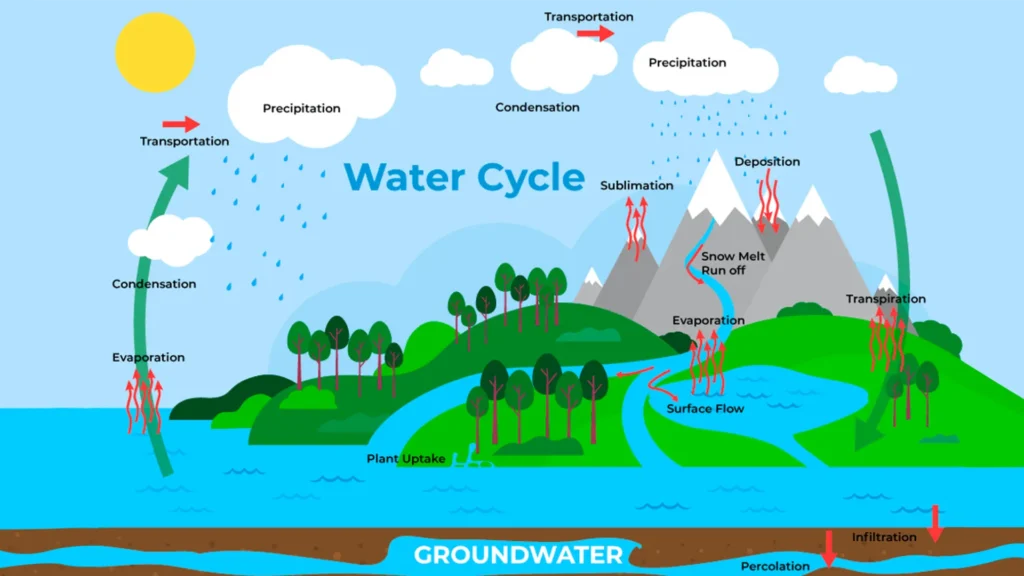With the substantial increase in the climate change situation, the global water cycle is experiencing major disturbances that give rise to extreme weather conditions in the form of frequent floods, droughts, extreme temperatures, less precipitation, etc. The regular occurrence of such a situation demands high human and economic costs. The frequent droughts diminish agricultural production resulting in food shortages in various parts of the globe whereas severe floods disturb the human shelters and infrastructure at a mass level pushing a large chunk of population to the extreme poverty levels.
The water cycle is a biogeochemical series of processes that explains the unending movement of water below, above, and on the surface of the Earth. These interconnected processes work in sync and any fluctuations bring change to the end-to-end water cycle. An increase in the temperature of planet Earth affects the rate of evaporation causing surplus water vapors in the surroundings giving rise to strong storms that are hazardous like cyclones, landslides, hurricanes, floods, typhoons, etc.
The ongoing studies reveal that climate change is acting as a catalyst in boosting the disturbed water cycle for human and industrial activities globally responsible for aggravating this situation and lately causing unexpected weather patterns. The disturbed water cycle also impacts the natural phenomenon pattern of water precipitation responsible for long-term drought.
As per the official data from the Intergovernmental Panel on Climate Change (IPCC), annually half of the world’s population witnesses a shortage of water at some time during the calendar year. Collectively these harsh weather conditions also cause health concerns and immature deaths among humans. 80% of the world’s population lives in areas of high water risks because of unreliable precipitation patterns, groundwater depletion, and pollution that significantly change the ‘Global Water Cycle’.
According to the United Nations, the world has witnessed an economic loss of around 50% due to climate change in the last two decades. It is tend to increase if the existing situation prevails. Thus, to address this prevailing situation and overcome the losses mankind must work hard to limit GHG emissions and carbon footprints under a robust framework supported through climate-resilient infrastructures.

